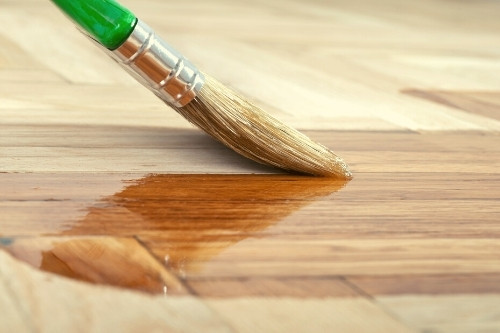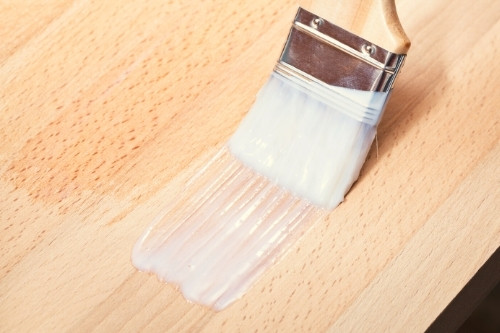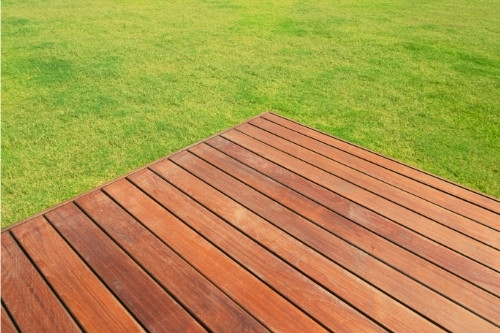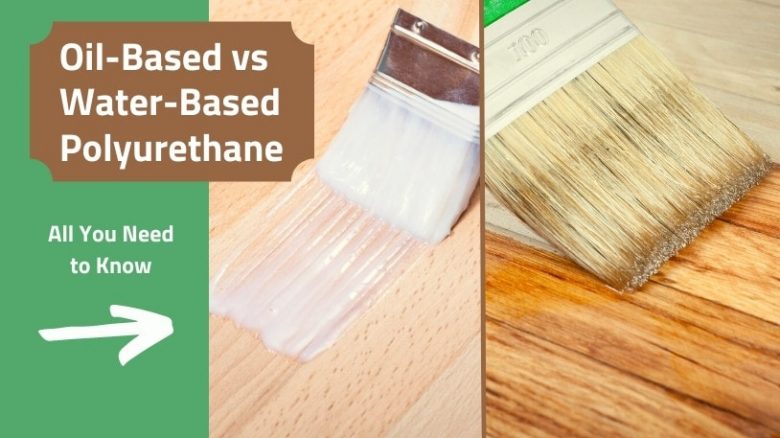When people consider applying polyurethane to wood, they often don’t differentiate between water-based and oil-based polyurethane. Yet, the two are very different in color, consistency, cost, application methods, and use.
I’ve used oil-based polyurethane on my projects for many years, yet I’ve recently become accustomed to the benefits of water-based products for specific applications. Both have their place depending on your requirements and today, I’ll step you through the information you need to make the right selection.
Stay with me for the next few minutes, and we’ll give you the information you need to get the best finish and durability on your woodworking project.
What is oil-based polyurethane

Oil-based polyurethane is a surface finish that uses a mineral solvent to carry urethane in suspension. Urethane is a synthetic polymer or plastic made from an isocyanate and resin blend.
Once applied to wood, the solvents help the resin level before evaporating. The resins then harden into a film in contact with oxygen, a process called cross-linking. The resins form a hard, clear plastic film that resists moisture and heat while being durable and attractive, emphasizing and deepening the color and grain of the wood.
What is a water-based polyurethane?

Water-based polyurethane uses a carrier medium different from oil-based products to suspend the urethane resins, utilizing latex or acrylic bases instead. These make the water-based polyurethane’s consistency much runnier, and it evaporates more quickly. The resin then hardens in contact with the air using the same cross-linking process as the oil-based products.
How are oil and water-based polyurethanes different
There are eight major differences between the two polyurethanes.
Color
In the tin, the water-based polyurethane looks milky-white but dries clear. Use water-based polyurethane if you wish the natural color of the underlying wood to be preserved.
The oil-based product is a rich honey color and dries with a light amber tint. If you’d like the wood color and grain to be deepened and enhanced, oil-based is best. Be aware that oil-based polyurethane yellows slightly with age.
Durability
You’ll hear people tell you that water-based products ‘are approaching’ oil-based for durability, but that’s only high-quality polyurethane applied by a professional, and even then, it falls short. Oil-based polyurethane lasts longer than water-based, hands down. As a rule of thumb, use an eight to ten-year durability for oil-based polyurethane and four to five years for water-based.
Related: How to Apply Polyurethane to Wood
Cost
Oil-based polyurethane is cheaper than water-based, by anything from 10 to 50% when comparing like-for-like products from the same manufacturer.
Coats required
Water-based polyurethane is considerably thinner than oil-based products. Due to this lower viscosity, water-based polyurethane contains 30 to 35% solids versus 45 to 50% for oil-based products. The difference means you’ll require one and a half to two times as many coats of water-based polyurethane for the same protection. On applications where you’ll need six coats of water-based polyurethane, you’ll need only three to four coats of oil-based.
Toxicity
The carrier medium used in oil-based polyurethane is a hydrocarbon, so it’s flammable, and the fumes can irritate the nose and eyes, with prolonged inhalation possibly endangering your health. If incorrectly disposed of, it can cause environmental harm.
Water-based uses an acrylic or latex base, so while it does smell and you should avoid breathing the fumes, it isn’t flammable and doesn’t cause environmental harm.
Drying time
Water-based polyurethane is far quicker to dry than oil-based products. You can apply a second coat of water-based polyurethane in two to three hours, whereas with oil-based products, you can expect to wait a minimum of eight to twelve hours. Usually overnight, depending on temperature.
Damage resistance
Oil-based polyurethane is more resistant to scratches, moisture, and heat than water-based products. The water-based polyurethane dries harder than oil-based and is more resistant to dents and knocks.
Cleanup
Water-based polyurethane is far easier to clean, requiring only water or soapy water to wash out brushes and clean up spills. Oil-based polyurethane needs mineral spirits or paint thinners, which pose problems with flammability, fumes, and safe disposal.
Oil vs Water-Based Polyurethane: Pros & Cons
Water-based polyurethane
PROS
- Quick-drying so faster to apply, and an earlier return of rooms to use
- Doesn’t change the underlying wood color
- Doesn’t yellow with age
- Environmentally friendly
- Good resistance to knocks and dents
CONS
- More expensive
- Up to twice the coats needed
- Half as durable as oil-based polyurethane (4 to 5 years)
- Faster drying time, so it is harder to get a good finish
Oil-based
PROS
- More resistant to heat, moisture, and scratches
- Lasts twice as long (8 to 10 years)
- Costs half as much
- Enhances the underlying wood color and grain
- Slow drying allows a better finish
CONS
- Slow drying, requiring twice as long to coat and return rooms to use
- Poses flammability, health, and environmental risks
- Yellows with age
- Dries softer, so less resistant to knocks and dents
When to use oil-based polyurethane
- If you are looking for the cheapest application, oil-based polyurethane wins hands-down. It’s half the cost, requires fewer coats, and lasts twice as long.
- If you wish to apply polyurethane to darker timbers or woods such as cherry or walnut, oil-based is the answer. It richens and enhances the color of the timber.
- If heat, moisture, or scratches are likely, I’d be using oil-based polyurethane. While professional flooring companies like water-based because it dries quickly, allowing them to get onto their next job, I’d use oil-based if I’m doing a floor myself. It’s tougher, more forgiving, and won’t need to be done again for a long time.
- If you’re an amateur at painting and finishing, oil-based polyurethane is more forgiving due to its slow drying time.
When to use water-based polyurethane
- If the timber to which you’re applying polyurethane is a light color, or you wish to preserve the natural tones.
- Water-based wins, hands down, if you want the shortest possible time before reinhabiting a room.
- If you or your family are sensitive to odors, don’t wish to use mineral-based solvents, or want an easy cleanup.
- If the area to which you’re applying polyurethane isn’t exposed to moisture or heat but is subject to hard knocks.
Which is better for hardwood floors?

The answer is very much a personal choice. I’d choose oil-based as it’s easy to apply, is moisture, scratch, and heat resistant; it’s cheaper and adds a lovely glow to the floor. The drawback is that you’ll need to leave the room vacant for longer. However, you won’t be redoing the floor again for a very long time, so in my opinion, it’s worth the wait.
If price is no hurdle, you have experience applying it or are having professionals apply it, you need a minimum time before the room is usable again, or if the area sees low traffic, I will choose water-based polyurethane. However, you’ll be redoing it twice as often at a greater cost.
Which is better for outdoor use?

Oil-based products are better for water resistance than water-based polyurethane. The added benefit is that the fumes that can cause problems inside the house are less of an issue outside. Oil-based polyurethane is also more resistant to heat, making it better outside. Just be aware that it can yellow a little as it ages.
F.A.Qs
Which is better, oil or water-based polyurethane?
Each has different strengths and weaknesses. Oil-based polyurethane will generally produce a longer-lasting finish and cost less. Water-based polyurethane dries quickly, preserves the natural color of wood, and is more environmentally friendly. Which one is better will ultimately boil down to your preference.
How can polyurethane be classified as water- or oil-based?
In liquid form, the water-based polyurethane is milky white, thin, and has a mild smell. Oil-based polyurethane is amber or honey-colored and has a thick consistency with a strong mineral smell.
Can you use water-based polyurethane over oil-based and vice versa?
Yes, you can. In either case, ensure the base coat is fully cured. Clean the surface of oils and dirt, scuff the surface with steel wool or 320-grit sandpaper, vacuum, and remove dust with a tack cloth. Then, apply the top coat of polyurethane.
Can you use water-based polyurethane over an oil-based stain?
Yes. Make sure the stain is fully cured. Allow at least 24 hours, preferably longer. Lightly sand the surface to create a keying surface for the polyurethane. Vacuum and tack cloth the surface to remove all dust. Apply 3 to 4 coats of water-based polyurethane.
Can you use oil-based polyurethane over a water-based stain?
Yes, but with care. The stain must be fully dry, so allow 24 to 48 hours minimum. As water-based stain sits on the surface of the wood, you risk wiping off some stain when you apply the oil-based polyurethane. Most experts apply a thin layer of shellac over the water-based stain, and then once fully dry, they apply the oil-based polyurethane.
How many coats of oil and water-based polyurethane to apply?
Using oil-based polyurethane, I’d put two coats on areas that won’t be contacted by anything or anybody, three coats on a kitchen table or countertop, and four coats on a floor or stair treads.
Using water-based polyurethane, I’d apply three coats on areas that don’t see any knocks, four to five coats on a kitchen table or countertop, and six coats on floors or stair treads.
Read More: How Many Coats of Polyurethane to Apply
Are both types of polyurethane waterproof?
No, neither is completely waterproof when applied to wood. However, both do assist in making wood water-resistant. Scratches, timber expansion, contraction, and not coating all faces of the wood will allow paths for water ingress. However, applying sufficient coats and keeping the finish in good condition will assist in repelling most moisture.
Conclusion
The choice you make between oil-based or water-based polyurethane will entirely depend on your unique circumstances, as each product has characteristics that better suit it to specific applications and budgets. Good luck with your project, and I trust the information provided in this article has increased your knowledge and assisted your decision-making process.

